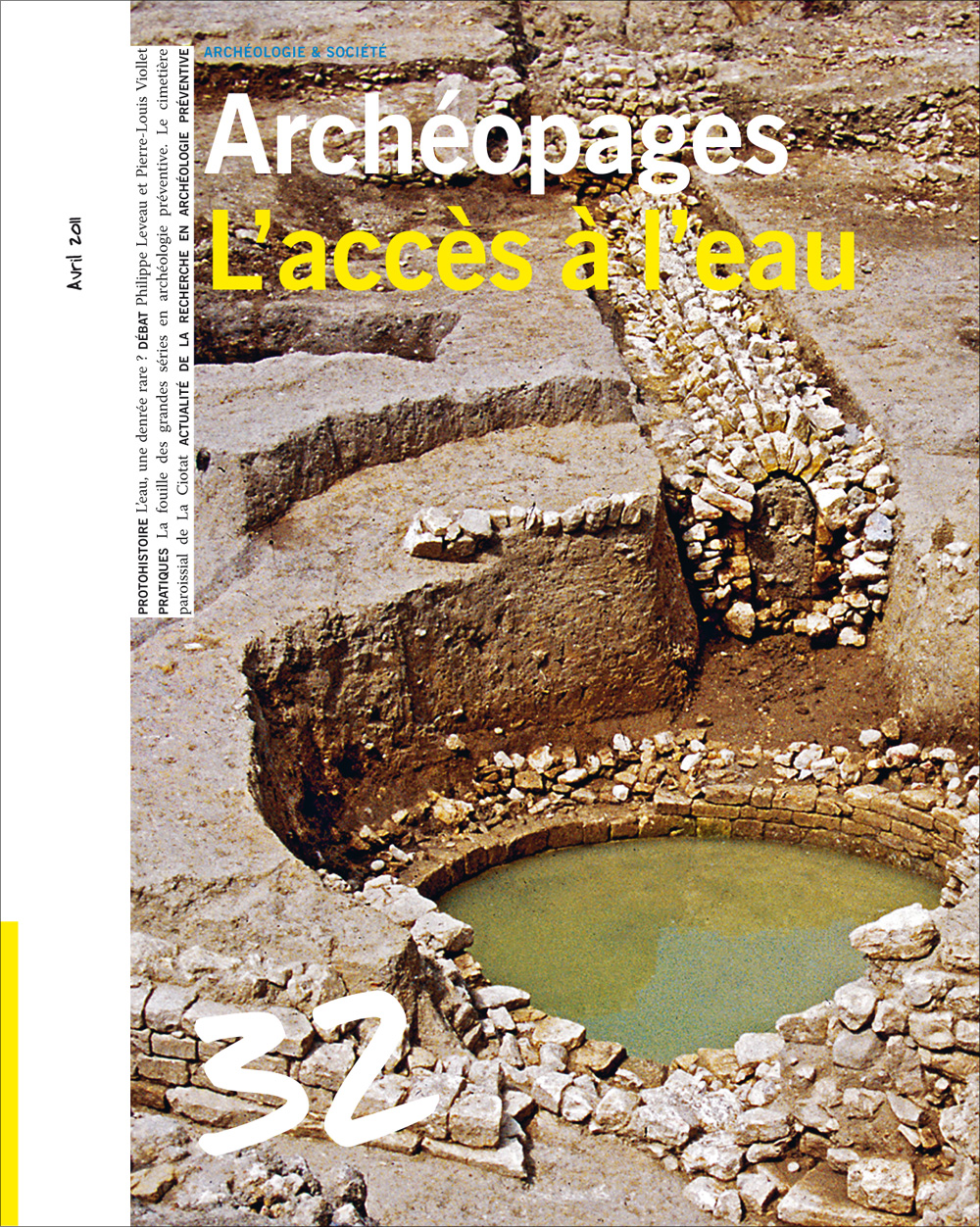You are here
Archéopages 32 - Access to water
To base itself on archaeology in order to rethink our ways of living together in one environment: Such is the editorial line of Archéopages, a scientific journal with a review panel. Each issue develops a specific theme by crossing the points of view of archaeologists of all backgrounds and those of other researchers in human sciences, thus taking stock of the recent contributions of archaeology to the knowledge of societies. A large space is also devoted to modern methods of archaeology. The journal is aimed at researchers, students and enlightened amateurs.
Systems for capturing and distributing water are at the same time little varied in their totality, and subtly adapted in their diversity. To technical and environmental constraints, social pressure is added. Managing water is first and foremost about defining priorities and conditions of use.

Editorial
Jean-Paul Jacob
File: Access to water
Water on Iron Age settlements: a rare commodity?
Florence Verdin
The water supply on Gallo-Roman rural sites - Wells in the middle Oise valley
Denis Maréchal
Box 1: Two wells from a Gallo-Roman sanctuary - Ulysse Cabzuelo
Box 2: Water management in the Roman Early Imperial villa of Estoube - Frédéric Veyssière, Fabienne Landou, Aline Briand
The aqueducts of La Fontaine de l’Étuvée. Organisation of a water catchment structure and its interaction with its surroundings
Franck Verneau
Water supply. The case of the provincial capital of Avaricum-Bourges
Marianne Surgent
Water catchment in the Upper Gard in the Rhône valley. The private aqueduct of the villa of Mayran
Loïc Buffat, Hervé Petitot, Laurent Vidal
Aqueducts and water supply on Gallo-Roman establishments. The examples of Castelnaudary and Sauvian
Cécile Dominguez, Hervé Pomarèdes, Christophe Ranché, Michel Compan
Two aqueducts in Roman and medieval Marseille. Urban topography and hydraulic activity
Nadine Scherrer, Ingrid Sénépart, Marc Bouiron
Water distribution in medieval Perpignan. A comparative approach to archaeological, documentary and iconographic sources
Agnès Bergeret, Aymat Catafau
Box 1: A blueprint for the distribution of water in 17th-century Perpignan - Aymat Catafau
Box 2: A rainwater drainage system in Carcassonne - Agnès Bergeret
The water supply of Cistercian sites in the Auvergne and Velay. Some ambitious vernacular undertakings
Emma Bouvard
Water catchment at Meaux. Connecting the archaeological and documentary sources
Olivier Bauchet, David Couturier, Nathalie Paccard
Debate - Harness and manage
Philippe Leveau, Pierre-Louis Viollet
Practical
The excavation of large complexes in mitigation archaeology. The example of the parish cemetery at La Ciotat
Anne Richier
News
Three plates of shale engraved
Françoise Labaune
Elements of a mausoleum
Catherine Viers
Revue « Archéopages : archéologie & société », 32
April 2011
Size 22 x 27,5 cm
104 pages
ISSN: 1622-8545
To subscribe or purchase a number, contact the publisher (Éditions Faton):
Librairie archéologique
CS50090 - 1, rue des artisans
21803 Quétigny cedex
Phone: +33 3 80 48 98 60
infos [at] librairie-archeologique.com
Catherine Chauveau
Cultural Development and Communication Department, Inrap
Editor in Chief
Phone: +33 1 40 08 81 44
catherine.chauveau [at] inrap.fr

